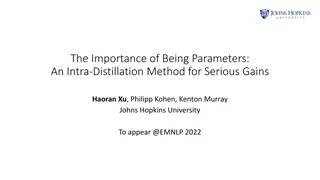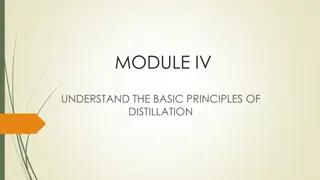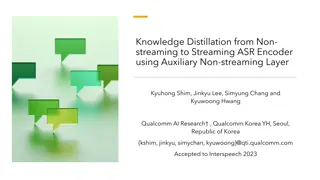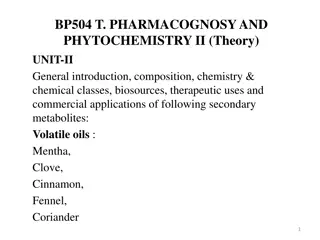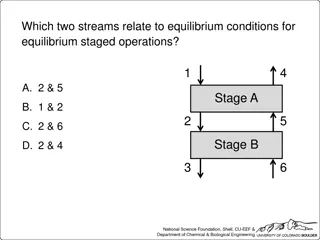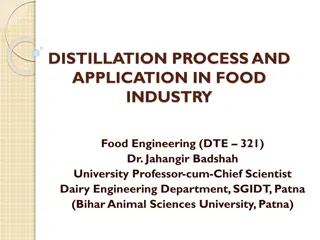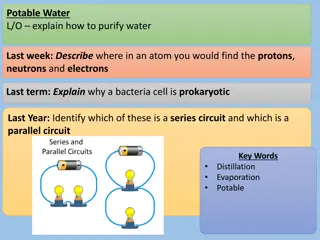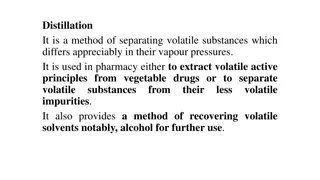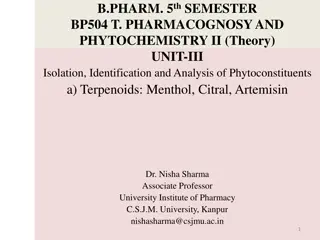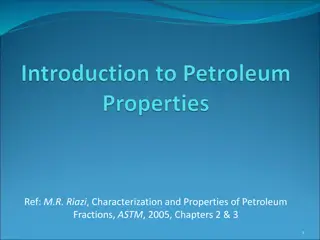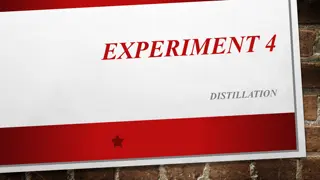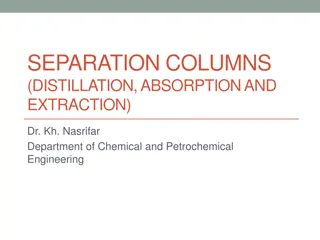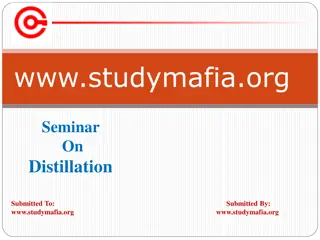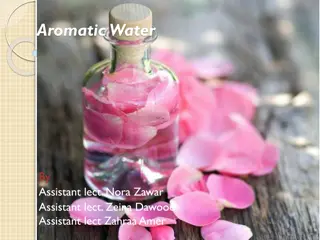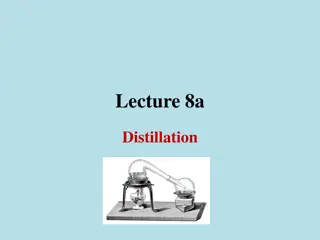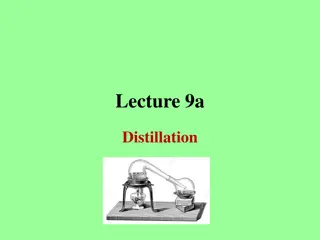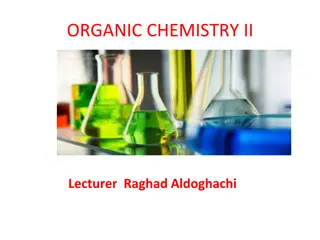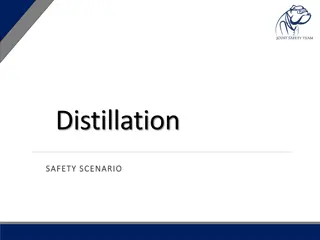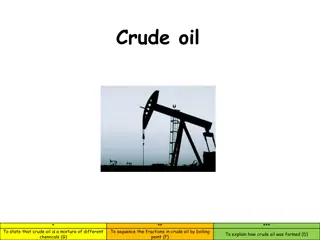Distillation in Practice: Making Ribena
Explore the process of making Ribena, a popular blackcurrant drink, through the lens of distillation. Learn how distillation is used to separate blackcurrant juice from skins, remove water, and collect aroma particles to create the final beverage. Engage with key concepts of distillation and filtration in a practical context.
Download Presentation

Please find below an Image/Link to download the presentation.
The content on the website is provided AS IS for your information and personal use only. It may not be sold, licensed, or shared on other websites without obtaining consent from the author.If you encounter any issues during the download, it is possible that the publisher has removed the file from their server.
You are allowed to download the files provided on this website for personal or commercial use, subject to the condition that they are used lawfully. All files are the property of their respective owners.
The content on the website is provided AS IS for your information and personal use only. It may not be sold, licensed, or shared on other websites without obtaining consent from the author.
E N D
Presentation Transcript
Topic Distillation Level Key Stage 3 (or any course for students aged 11-16) Outcomes 1. To explain how distillation can be used to separate a mixture involving liquids with different boiling points 2. To describe how filtration can be used to separate a solid from a solution Making Ribena is a great context to teach distillation. It s sufficiently simple to be useful, and students will want to know how this delicious drink is made. I ve simplified the process somewhat to focus the context on the key concepts we want students to learn. You could adapt this resource if looking at fractional distillation, as this would also work, and perhaps be a better way of separating out the two liquids. However, for this activity, we will assume that the water and the smell particles have a large enough difference in boiling point to be separated by simple distillation. Information for teachers www.thescienceteacher.co.uk | resources for science teachers who like to think
Making Ribena Ribena is a drink made from blackcurrants. The blackcurrants are harvested from farms across the UK and taken to factories. The blackcurrants are squashed between giant plates and the juice from the squash is separated from the berry skins. Before the blackcurrant juice is stored, some of 1. 2. 3. 4. 5. 6. 7. the water is removed. 8. Unfortunately, during this process, some of the 9. particles that give the juice a blackcurrant smell also 10. evaporate. Distillation is used to collect these smell particles 11. which are then stored in big tanks. The blackcurrant concentrate 12. and the smell particles are mixed together when the Ribena is 13. put into bottles.
Answer the following questions after you have read about making Ribena. Boiling point 1. What separation process do you think was used to separate the blackcurrant juice from the blackcurrant skins? (line 5) 2. Suggest why water is removed from the juice. (line 7) 3. Why can t the water just be removed by evaporation? 4. Would simple distillation collect the smell particles if their boiling point was 100 oC? Explain your answer. 5. Write a method to explain how you would make Ribena concentrate in the lab. You should include how you would: 150oC 100oC (Water) i) release the juice from the blackcurrant berries ii) separate the blackcurrant juice from the blackcurrant skin iii) remove the water particles iv) but still collect the smell particles v) create your final Ribena drink. 50oC (Smell) 0oC Blackcurrant -50oC
1. What separation process do you think was used to separate the blackcurrant juice from the blackcurrant skins? (line 5) Filtration. 2. Suggest why water is removed from the juice. (line 7) So it takes up less volume to store/requires fewer storage tanks/ fewer lorries to transport? 3. Why can t the water just be removed by evaporation? Because the smell particles would also evaporate and be lost 4. Would simple distillation collect the smell particles if their boiling point was 100 oC? Explain your answer. No, because they would evaporate and condense with the water particles. 5. Write a method to explain how you would make Ribena concentrate in the lab. You should include how you would: Boiling point 150oC 100oC (Water) 50oC (Smell) i) release the juice from the blackcurrant berries (crush using pestle and mortar) ii) separate the blackcurrant juice from the blackcurrant skin (filter) iii) remove the water particles (heat) iv) but still collect the smell particles (must collect first, heating to b.pt and condense, then remove distillate) v) create your final Ribena drink (add back smell particles to concentrate, add water and some sugar!) 0oC -50oC





